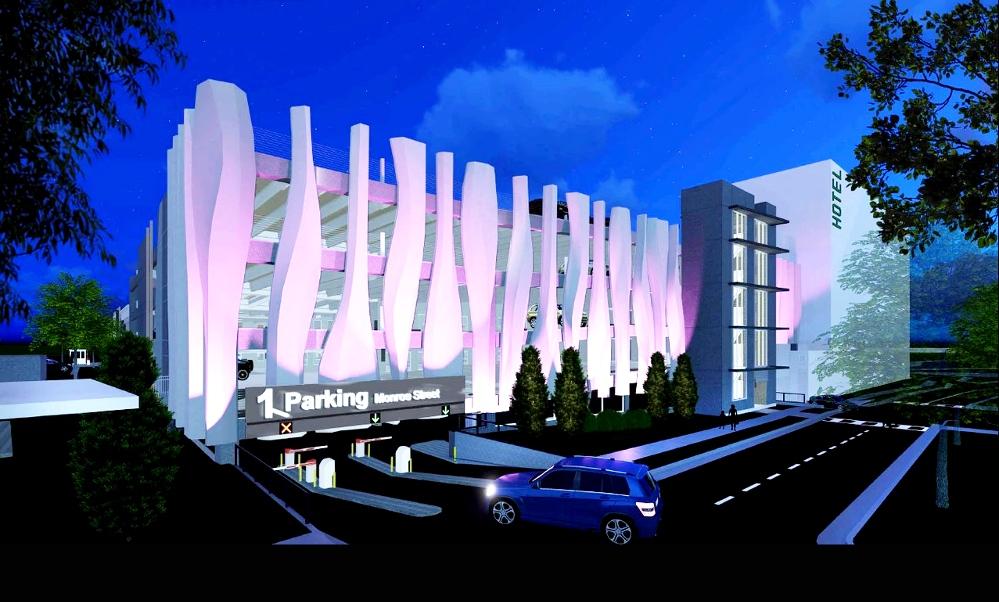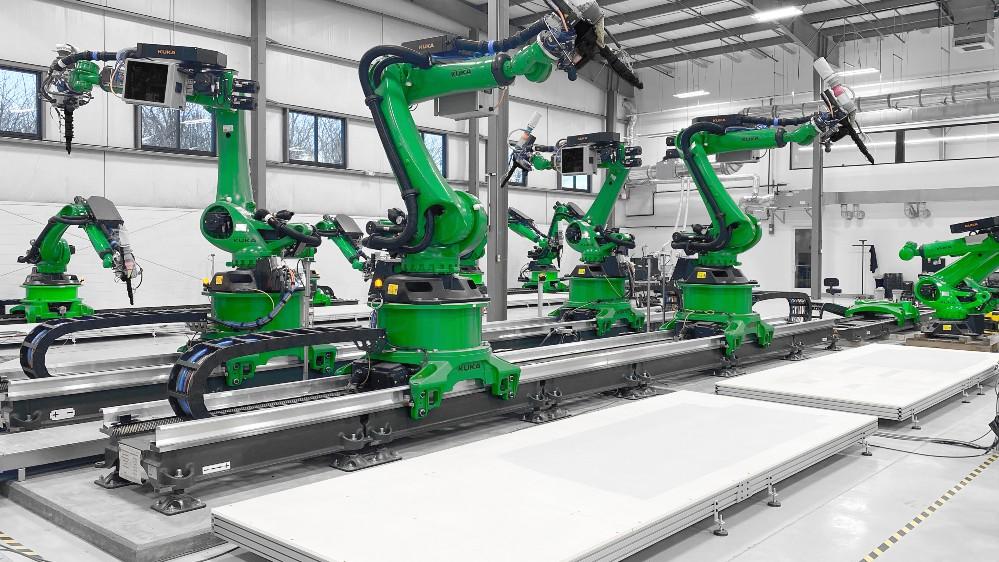- FMA
- The Fabricator
- FABTECH
- Canadian Metalworking
Our Publications
Categories
- Additive Manufacturing
- Aluminum Welding
- Arc Welding
- Assembly and Joining
- Automation and Robotics
- Bending and Forming
- Consumables
- Cutting and Weld Prep
- Electric Vehicles
- En Español
- Finishing
- Hydroforming
- Laser Cutting
- Laser Welding
- Machining
- Manufacturing Software
- Materials Handling
- Metals/Materials
- Oxyfuel Cutting
- Plasma Cutting
- Power Tools
- Punching and Other Holemaking
- Roll Forming
- Safety
- Sawing
- Shearing
- Shop Management
- Testing and Measuring
- Tube and Pipe Fabrication
- Tube and Pipe Production
- Waterjet Cutting
Industry Directory
Webcasts
Podcasts
FAB 40
Advertise
Subscribe
Account Login
Search
Advanced manufacturing technology is used to produce the facade of a building in a ‘technology town’
- February 10, 2022
- News Release
- Additive Manufacturing

Rendering of the deck of the Monroe Street parking garage in Huntsville, Ala. It features a 3D-printed polymer facade and is illuminated with LED lighting, which creates an ethereal effect at night.
The firm of Fuqua & Partners Architects decided that the parking garage it designed in its hometown of Huntsville, Ala., needed to be fitted with more than just run-of-the-mill exterior panels. The redeveloped garage needed an eye-catching, dynamic facade.
“Huntsville is an engineering and technology town,” said Fuqua Principal Les Tillery. “The idea that Huntsville could take a lead in 3D printing technology for an important downtown structure was pretty powerful to us as the architects. We thought it was appropriate to use Branch Technology panels. The technology is representative of the city and its trajectory.”
The facade of the Monroe Street parking garage is made from exterior panels additively manufactured using Branch Tech’s proprietary BranchMatrix material and Cellular Fabrication (C-Fab) process. The polymer matrix is a freeform, 3D-printed structural lattice that employs geometric optimization principles to generate architectural components with maximum strength and minimal material, says Branch Tech. Virtually any shape or form can be 3D-printed with the material.
The Chattanooga, Tenn., additive manufacturer uses its technology to print parts up to 8 by 8 by 35 ft. in a single print. The patented process combines custom-built, 12-ft. tall, 6-axis industrial robots; powerful algorithms; and the company’s Freeform extrusion process, which allows huge structures to be 3D-printed in free space without supports. Upon completion of the panels, which are printed at the Branch Tech factory, they are shipped to the building site and installed.
Objects made by the C-Fab process reportedly can be printed from 20 times less material than those produced by traditional layering approaches.
(Click here to read more about Branch and its proprietary technologies.)
To fabricate the parking garage facade, Branch printed the polymer lattice panels, then filled their spaces with 2-lb.-density insulating foam. Next, it robotically milled the panels to size, and, lastly, finished them with glass-fiber-reinforced concrete.
The area of the parking deck panels totals 12,000 sq. ft.—the largest Branch Technology has ever produced.
“Serving as a partner on such an important downtown Huntsville revitalization project was certainly attractive to us,” said Branch Tech CEO and Founder Platt Boyd. “We were proud … to help the architects on the project achieve their vision.”
Tillery added that the technology “allowed us to achieve unique shapes that we wouldn’t have been able to get otherwise.”
- Podcasting
- Podcast:
- The Fabricator Podcast
- Published:
- 04/16/2024
- Running Time:
- 63:29
In this episode of The Fabricator Podcast, Caleb Chamberlain, co-founder and CEO of OSH Cut, discusses his company’s...
- Trending Articles
- Industry Events
16th Annual Safety Conference
- April 30 - May 1, 2024
- Elgin,
Pipe and Tube Conference
- May 21 - 22, 2024
- Omaha, NE
World-Class Roll Forming Workshop
- June 5 - 6, 2024
- Louisville, KY
Advanced Laser Application Workshop
- June 25 - 27, 2024
- Novi, MI

























